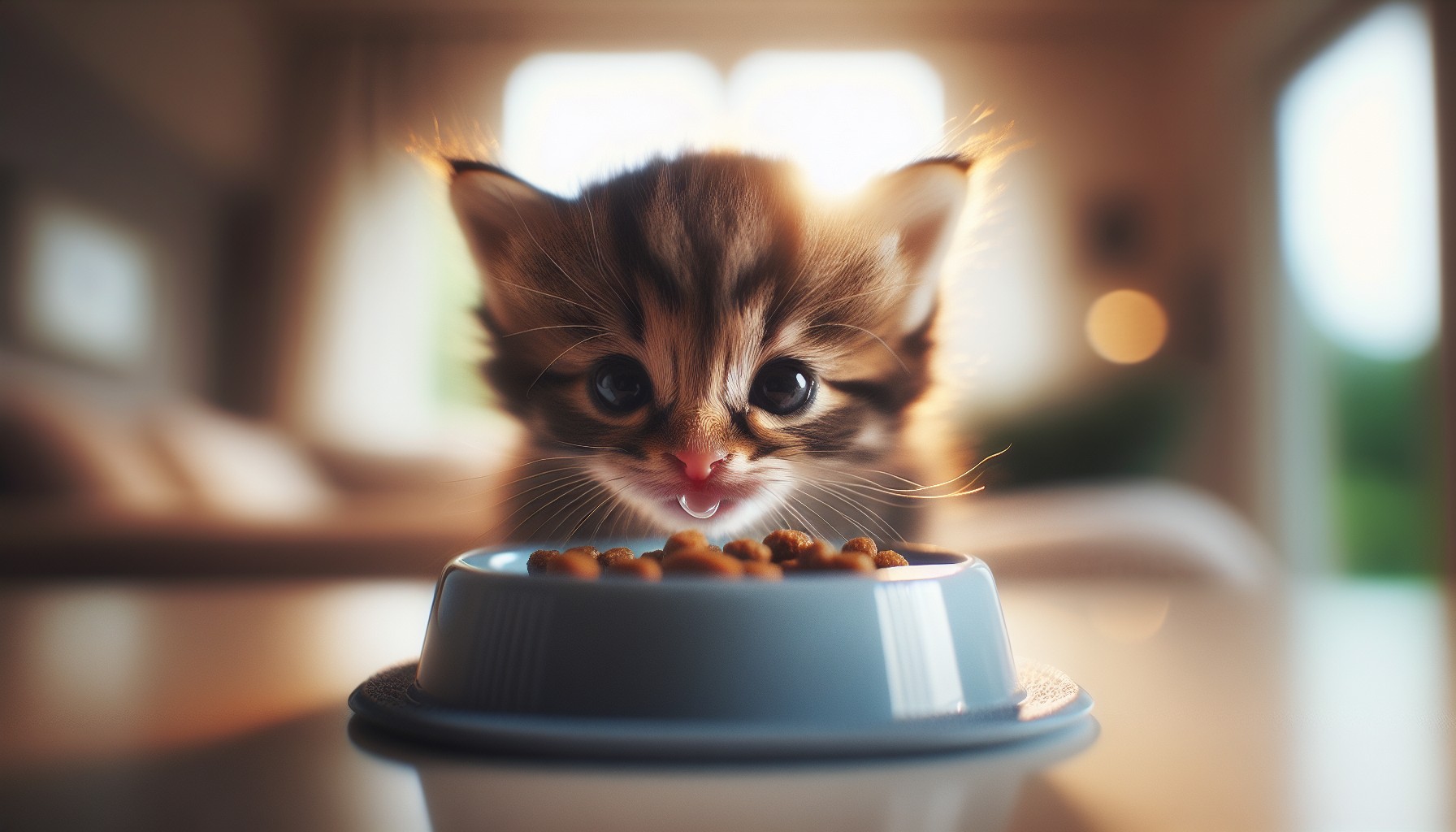The growth and development of your kitten can be such a delightful process! Let’s navigate the exciting journey of transitioning your kitten from feeding on milk to enjoying solid foods. As a responsible cat owner, your prime goal should be to ensure a seamless transition for your furry companion.
When is the Right Time for Weaning?
Conventionally, cat owners commence the weaning process for kittens around the age of 3-4 weeks. However, just like human infants, every kitten is individualistic. Some kittens might exhibit readiness for solid food earlier, while others might require a bit more time.
The Initial Stages of Weaning
Remember how you were eased into new food experiences? Your kitten also requires a delicately managed introduction. You can start the process by blending some kitten formula with wet food to obtain a soup-like consistency. This recipe should be placed in a low, easily reachable dish for your kitten.
Signs to Indicate Your Kitten is Ready
Watch out for these telltale signs of readiness:
– Attempts to consume the mother’s meals
– Interest in meals being consumed by humans
– Exhibiting steady balance while walking
– Sprouting of minute teeth
Implementing a Gradual Weaning Process:
Consider the weaning process as a gradual transition:
1. 4th Week: Begin with a mixture of formula and wet food
2. 5th Week: Progressively thicken the mixture
3. 6th Week: Start giving plain wet food
4. 7th-8th Weeks: Start incorporating soft kibble into meals
Optimal Food Choices for Weaning
Encourage optimal growth by providing the right dietary elements:
– High-grade, wet kitten food
– Premium kitten-formula
– Kitten-specific kibble
Common Hurdles in Weaning Process
Do not be alarmed by the mess— your kitten will likely:
– Play with the food (which is completely normal!)
– Take some time to become accustomed to eating from a bowl
– Need some assistance in learning to drink water
Handy Tips for Successful Weaning
To make your kitten’s weaning experience enjoyable:
– Ensure their feeding area is always clean
– Use shallow dishes for feeding
– Stay patient and consistent
– Follow regular feeding schedules
When to Consult a Vet
At times, your kitten may require professional help. Contact your vet if:
– Your kitten refuses food for a whole day
– Your kitten shows signs of digestive problems
– Your kitten appears lethargic during the weaning period
Transitioning to Adult Cat Food
By 8-10 weeks, your kitten should be fully weaned and enjoying solid food. Keep monitoring their growth and always have fresh water available.
Remember, every kitten develops at their own pace. Your patience and love will help them master this important milestone. Happy feeding!

